The Ultimate Guide To Competency Mapping for Trainers & Instructional Designers
Competency mapping empowers training providers to design personalized training programs for employees based on their skills. Learn what it is and how to use it.
Competency mapping empowers training providers to design personalized training programs for employees based on their skills. Learn what it is and how to use it.
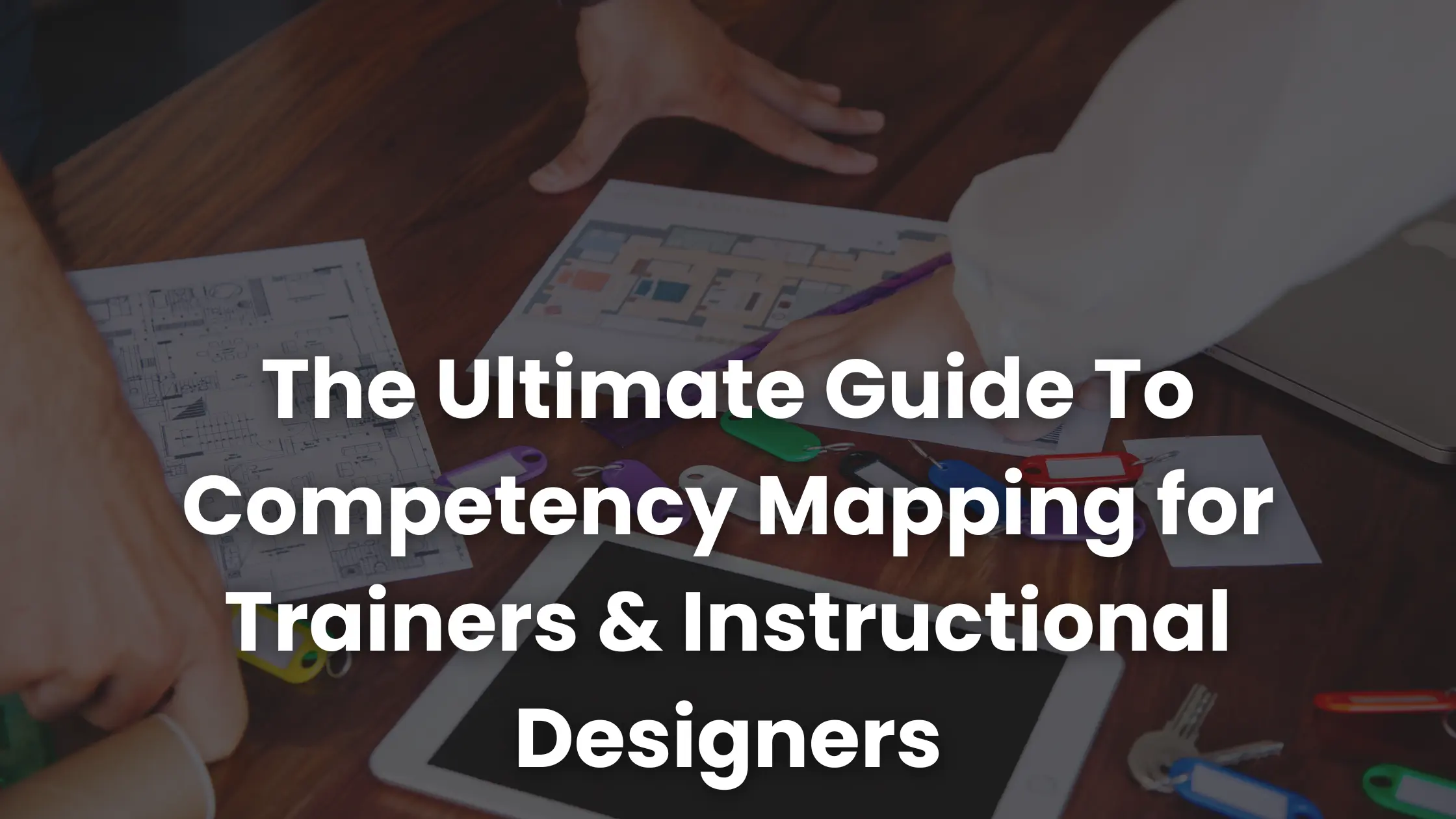
If you’re a training provider, you might already be struggling with designing learning programs that truly equip learners with the precise skills they need to excel. With a diverse workforce, it’s quite difficult to develop personalized training courses for every employee.
Unfortunately, generic or misaligned training results in wasted resources and missed potential. Competency mapping solves this issue.
It is a powerful, strategic approach that allows training providers to systematically identify, define, and develop the essential competencies required for job roles and business success. According to research, 68% of survey respondents consider competency mapping the best tool for succession planning in their company.
Let’s explore everything training providers should know about competency mapping, from its fundamentals and benefits to applying it for competency-based training.

Competency mapping is a process that identifies the specific skills, knowledge, attitudes, and behaviors essential for effective performance in a job or role. A competency framework outlines these competencies, often categorized by:
These are organizational-wide skills and behaviors expected across all employees, such as communication, teamwork, and ethical conduct.
Role-specific skills and knowledge related to the main duties of a position. For example, sales techniques for marketing roles.
Practical, job-specific skills involving tools, processes, or technologies, like proficiency in CRM software or data analysis.
Personal attributes and interpersonal skills, such as adaptability, leadership, emotional intelligence, and problem-solving, influence how tasks are performed.
Traditional training needs analysis focuses on broad skill gaps or organizational goals alone. Comparatively, competency mapping narrows down to granular, role-related skills tied directly to job expectations. It supports targeted development efforts and measurable learner outcomes.
Competency mapping offers multiple strategic advantages for training providers. First, it ensures training content directly addresses verified skills gaps, improving return on investment by avoiding irrelevant or redundant training.
Second, it facilitates personalized learning paths for individual learners, so they can focus on the competencies they need most. Third, competency-based training supports career development by linking learning progress to clear proficiency milestones aligned with organizational objectives.
Competency mapping defines each competency clearly based on specific mastery levels and behavioral indicators. These levels help assess and chart employee progress, customize training, and set clear expectations.
A commonly used four-level scale includes:
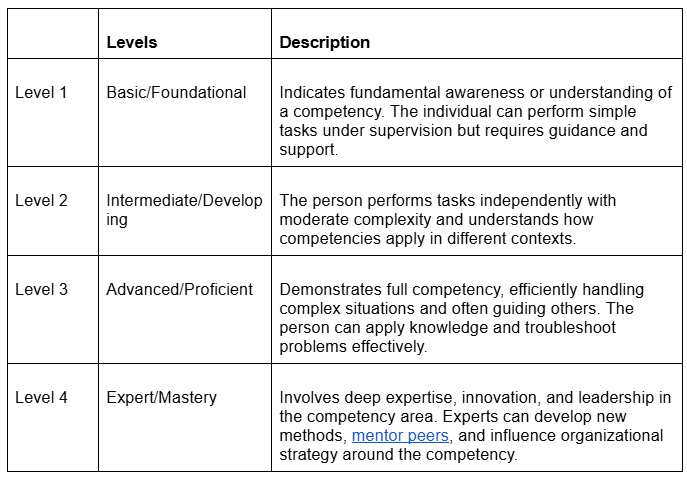
Regular competency tracking and assessment provide data-driven insights that help measure training program effectiveness and inform ongoing improvement.
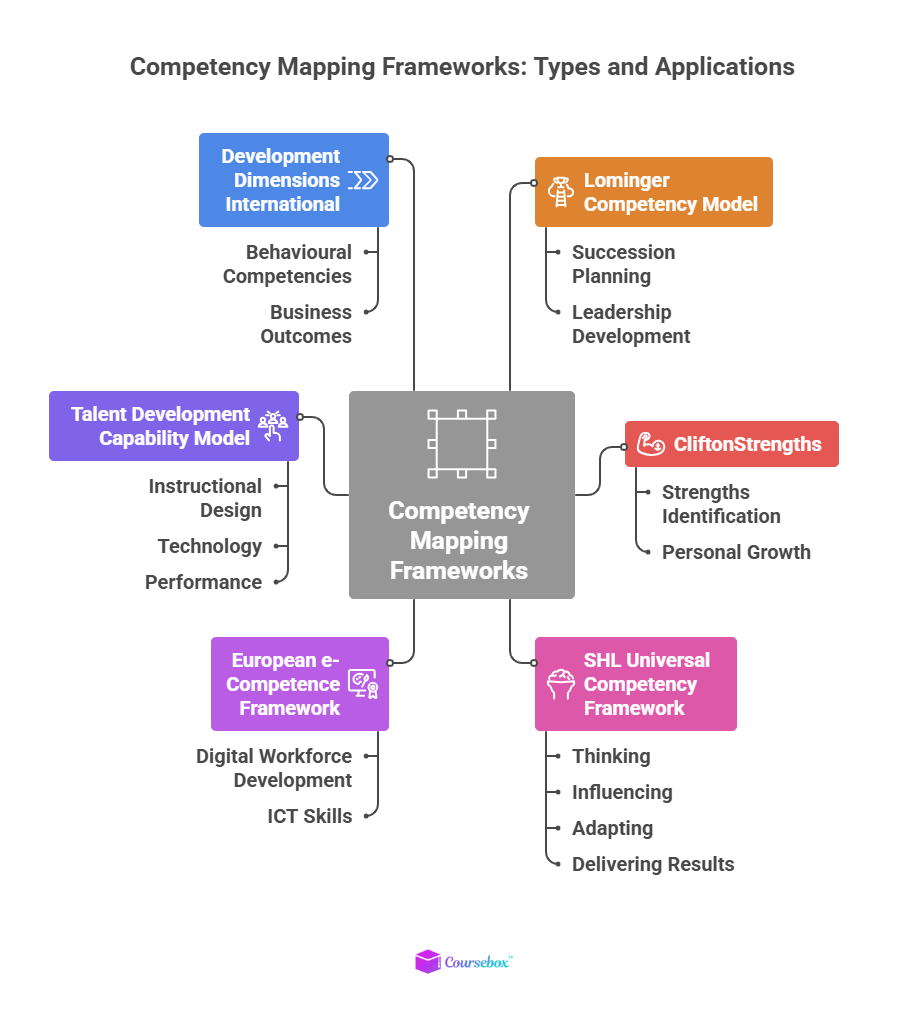
Competency mapping frameworks provide structured approaches to identifying and measuring the attributes required for successful job performance. Here are some widely recognized frameworks used by training providers and HR professionals:
The Lominger model is a comprehensive competency framework developed by Michael Lombardo and Robert Eichinger. It includes 67 competencies spanning leadership, interpersonal, and managerial skills, designed to identify behaviors that differentiate top performers.
Widely used in leadership development and succession planning, the Lominger Competency Model offers detailed behavioral indicators and development strategies for training providers.
CliftonStrengths emphasizes identifying an individual’s unique talents and strengths rather than focusing on deficiencies. Developed by Gallup, the framework helps individuals and organizations leverage innate strengths to improve performance.
Training providers use the CliftonStrengths model to build customized development plans that empower learners to capitalize on their natural abilities.
SHL’s framework is built on validated research and consists of 16 core competencies grouped under four clusters: thinking, influencing, adapting, and delivering results. This data-driven framework is frequently used for talent assessment and development across various industries worldwide.
The e-CF is a standardized framework developed by the European Commission to map ICT-related competencies. It defines 40 competencies categorized into five areas, such as strategy, delivery, and management, with proficiency levels to guide workforce planning and development across Europe.
Training providers specializing in ICT and digital skills use e-CF to align courses with recognized standards, enabling learners to acquire job-relevant skills aligned to market needs.
Created by the Association for Talent Development (ATD), this model focuses on the competencies required by training and development professionals themselves. It covers 23 capabilities in areas like instructional design, learning technologies, and performance improvement.
Training providers often use the Talent Development Capability Model to benchmark trainer capabilities and design professional development programs to enhance instructional effectiveness.
DDI’s competency framework is designed for leadership development and talent management, incorporating a robust set of competencies aligned with business outcomes. It emphasizes behavioral indicators and development actions that relate to leadership effectiveness, performance, and organizational success.
Training providers leverage DDI’s model to create targeted leadership programs that align employee skills with company goals.
Ensure you select a framework that aligns with your organizational goals, industry standards, and target audience.

Here is how you can apply competency mapping to design impactful training programs:
The very first step is to establish the "why" and the boundaries of your competency mapping initiative.
Suppose you run a retail company and want to improve the competency of your customer service representatives (CSRs). Your focus is on enhancing problem-solving abilities, product expertise, and communication skills of the reps working at your front-line retail stores and call center teams across all locations.
In this case, you must define your objectives to clarify the expected outcomes. It could be reducing complaint resolution time or increasing customer satisfaction scores. With that, determine the scope to ensure focused data collection and resource allocation.
This step involves detailed discussions with leadership, training managers, and HR to align business goals with learning priorities.
Next, conduct a thorough job analysis to hear directly from those performing the role and their supervisors. You can do so via structured interviews, surveys, and observations. Not only that, but you can also review existing job descriptions and performance appraisals.
In our CSR training example, you can conduct interviews with your CSRs to learn about their daily challenges, such as handling irate customers or upselling new products. With surveys, you can capture self-assessed skill confidence levels and highlight gaps.
Observing CSR interactions (in-store or call recordings) provides real behavioral data. This comprehensive assessment will help you capture what successful performance looks like, beyond standard job specs.
Now, analyze the job data to classify your CSRs’ competencies into core, functional, technical, and behavioral competencies.
For CSRs, behavioral competencies like emotional intelligence, conflict de-escalation, and active listening are essential to delivering superior customer experiences. At this step, you may have to conduct workshops with HR and subject matter experts to finalize the list of competencies critical for the role.
This is a key deliverable stage where you formally document each competency, ensuring it is clear, actionable, and measurable. For each competency, define:
This framework serves both as a guide for training content developers and as an assessment blueprint.
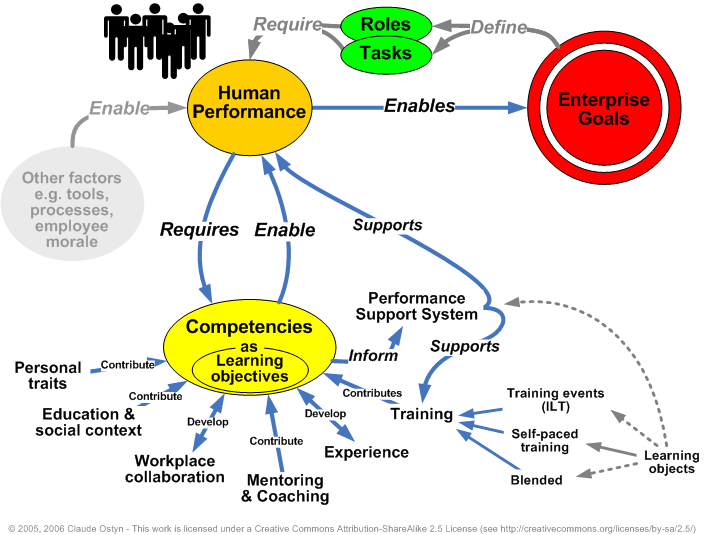
Now, assign the detailed competencies to the CSR role with required proficiency levels for each. For example, using the CRM system might be mandatory at an Intermediate level, while product knowledge requires Advanced proficiency.
This creates role-specific competency profiles that clarify essential skills and expected proficiency. You can then set priorities by indicating which competencies need training emphasis based on current learner assessments.
Before implementing, validate the competency framework with all stakeholders, including CSRs, supervisors, HR leaders, and trainers. Conduct workshops or feedback sessions to ensure the framework reflects real job demands and to incorporate inputs.
This inclusive approach builds trust, encourages ownership, and fosters a culture that values competency development.
Use diverse assessment methods tailored to each competency type.
For example, you can test technical skills (CRM usage) via practical performance assessments or simulations. On the other hand, behavioral skills (empathy, communication) can be evaluated through role-play scenarios, peer feedback, or 360-degree reviews. Similarly, you can assess knowledge-based competencies with quizzes or online tests.
In our CSR example, an assessment might simulate a difficult customer call requiring conflict resolution skills, scoring reps on their responses. Self-assessments aligned with the framework foster learner reflection, while manager evaluations add additional perspectives.
Based on assessment results, design personalized learning pathways to fix competency gaps. For CSRs who struggle with product knowledge, focus on interactive product tutorials and quizzes. Those needing help with emotional intelligence might engage in virtual reality role-playing or video-based soft-skills workshops.
Additionally, you can blend formats, including microlearning modules, coaching, and webinars, tailored for each competency. Also, ensure your learning courses are accessible via mobile devices to support on-the-job reinforcement.
Don’t forget to monitor the performance of your training programs and iterate whenever needed.
Competency mapping is a game-changer for training providers aiming to maximize impact, efficiency, and learner success. It brings clarity and precision to understanding and developing the critical skills for roles and organizational goals.
AI-powered platforms like Coursebox empower training providers with features that align perfectly with competency mapping needs. Its intelligent course authoring accelerates content creation linked to competencies, ensuring consistent skill development. Moreover, automated quiz generation and instant grading based on competency criteria provide real-time feedback to learners and instructors.
Additionally, Coursebox’s AI chatbots offer 24/7 conversational learner assistance. It helps training providers deliver high-quality, scalable, competency-aligned training programs efficiently.
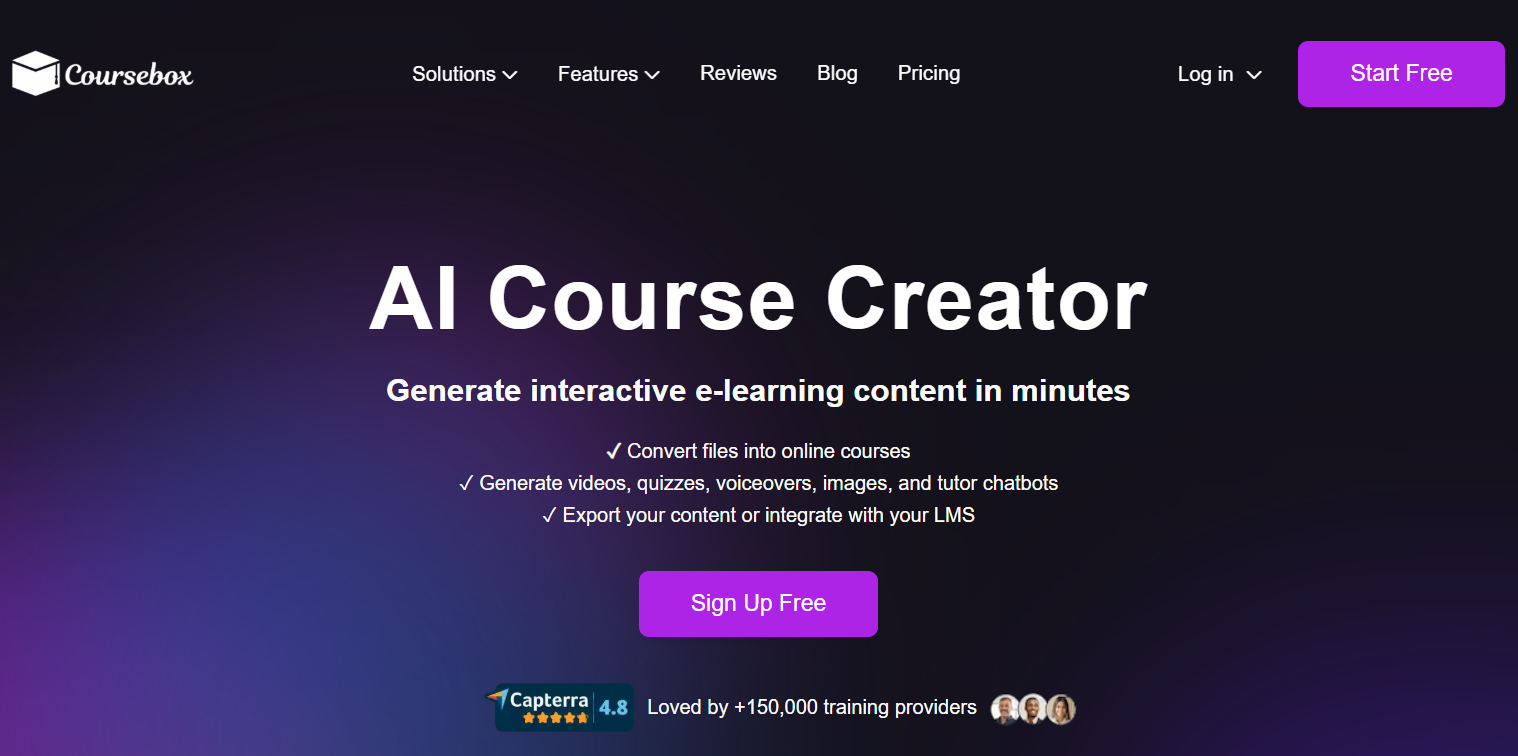
Want to learn more? Sign up for free now to get started!
Competency mapping is a systematic process of identifying and defining the specific skills, knowledge, and behaviors required for effective job performance. For training providers, it ensures that learning programs are directly aligned with the actual skills employees need, making training more relevant and impactful. This helps improve learner outcomes and business results.
The competency level scale describes varying degrees of proficiency for each skill or behavior, usually ranging from basic to expert. The typical four-level scale includes: Level 1 (Basic/Foundational) for fundamental understanding, Level 2 (Intermediate/Developing) for independent performance, Level 3 (Advanced/Proficient) for complex and consistent application, and Level 4 (Expert/Mastery) for deep expertise and leadership.
A competency framework typically includes core competencies (organization-wide skills like communication), functional competencies (role-specific skills), technical competencies (job-related technology or processes), and behavioral competencies (soft skills like adaptability and teamwork).
Competency frameworks should be revisited regularly, at least annually or whenever significant changes occur in job roles, technology, or business strategy. Regular reviews keep frameworks relevant and ensure training programs address current and emerging skill requirements effectively.
Coursebox streamlines competency mapping by enabling AI-powered course creation aligned with competency frameworks. It automates quiz and assessment generation based on defined competencies, offers instant grading, and delivers real-time learner support through AI chatbots. This integration makes it easy for training providers to design, produce, and track competency-based training efficiently.
